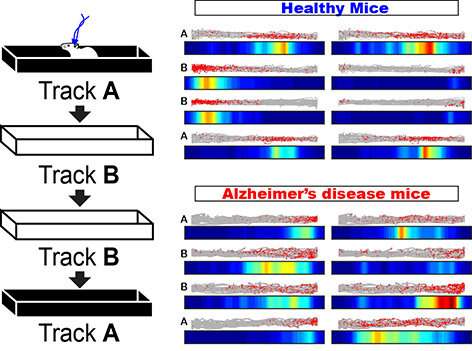
July 21, 2020—Patients with Alzheimer’s disease frequently suffer from spatial memory loss, such as no recognition of where they are, and forgetting where they put their belongings. They often show a wandering symptom, which is also a feature of spatial memory impairment. Until now, the brain network mechanism that causes spatial memory impairment had been unclear.
Published today in Neuron, the study titled, “Disrupted place cell remapping and impaired grid cells in a knockin model of Alzheimer’s disease,” reveals how the normal brain network function of hippocampus cells which works to discriminate a distinct spatial environment in a process called “remapping,” was disrupted in Alzheimer’s disease. The study, done Alzheimer’s disease model mice, found that this disruption of hippocampus is most likely caused by the activity impairment of the entorhinal cortex, a brain region that supplies information to the hippocampus.
“We recorded the brain cell activity in the hippocampus, which is the memory center of the brain, responsible for spatial memory, among other things,” said Kei Igarashi, Ph.D., an assistant professor in the Department of Anatomy & Neurobiology at the University of California, Irvine School of Medicine. “Our findings could lead to the development of a method to reactivate brain activity of the entorhinal cortex, which may help establish new treatments for preventing the progression of spatial memory impairment in Alzheimer’s disease patients.”
Igarashi has been studying brain network mechanisms for Alzheimer’s disease since he started his lab in 2016. “Our memory comes from activities of the brain network. To find out the cure for memory impairment in Alzheimer’s disease, we need to understand how the network function is impaired,” he said.
Igarashi is 2019 New Vision Research and BrightFocus Foundation award recipient. The first author on this study, Heechul Jun, is a MD/Ph.D. student in the UCI Medical Scientist Training Program.
Source: Read Full Article
